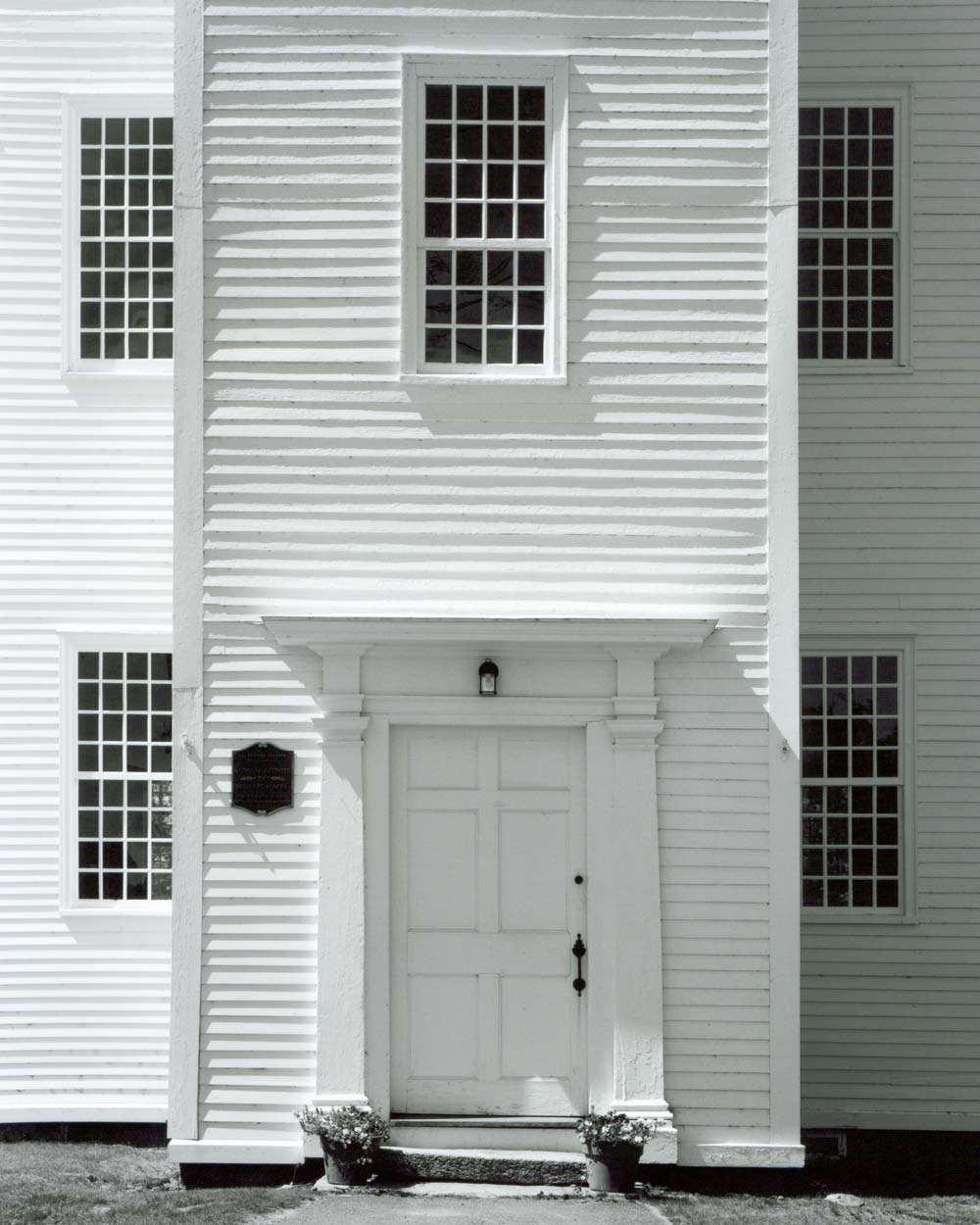Meetinghouses
Meetinghouses were centers of government, business, and worship in New England towns during the seventeenth and eighteenth centuries. Many meetinghouses still stand and are treasured for their spare architecture and precise, now worn, woodwork. Within their space, debate, collaboration, and prayer—coupled to decisions guided by mutual self-interest—established communities.
Yet our twenty-first century communities, despite affirming values of responsibility, respect, and justice, continue to give rise to public and private human mistreatment and inequity. We would do well to agree upon, and uphold, William Glasser’s characterization of responsibility (Reality Therapy, 1965)—”the ability to fulfill one’s needs, and to do so in a way that does not deprive others of the ability to fulfill their needs.”
Photo by Paul Wainwright
Door and Windows, Canaan Meetinghouse (1793), Canaan, New Hampshire, 2006
Photography by
Paul Wainwright
The meetinghouse photographs by Paul Wainwright are reproduced by permission from his beautiful book A Space for Faith: The Colonial Meetinghouses of New England.


